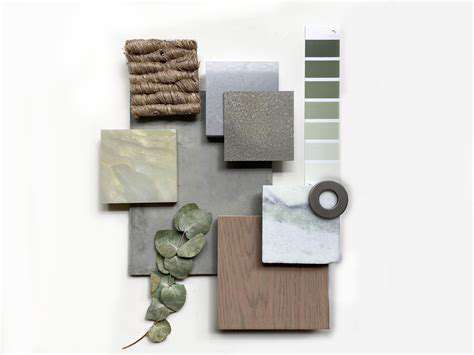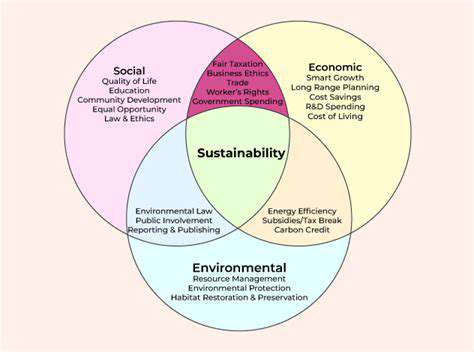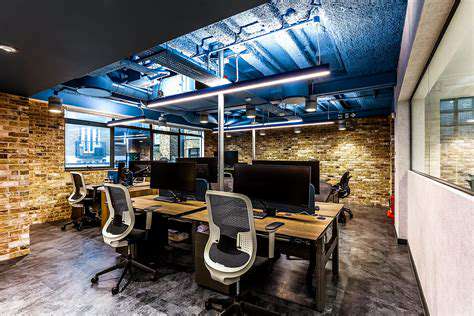Best Interior Design Tips for Full Package Renovations

Lighting Design: Elevating the Aesthetic and Functionality
Strategic Placement for Maximum Impact
The art of lighting placement transforms spaces from ordinary to extraordinary. When designing a kitchen, bright task lighting over countertops creates a functional workspace, while in living areas, soft ambient lighting fosters relaxation. Thoughtful placement of reading lamps near seating areas combines practicality with visual harmony. This intentional approach to illumination creates spaces that are both beautiful and purposeful.
Directional lighting serves as a design tool, drawing attention to architectural details or cherished artwork. By varying light intensity and warmth throughout a room, designers craft dynamic environments that evolve with the time of day. This nuanced approach results in spaces that feel alive and responsive to their occupants' needs.
Color Temperature and Mood Setting
Light warmth dramatically alters a room's character. The golden glow of 2700K lighting wraps living spaces in comfort, perfect for unwinding after long days. In contrast, crisp 4000K lighting energizes home offices and kitchens, sharpening focus during task-intensive activities. Understanding this spectrum allows homeowners to create tailored atmospheres in every room.
Modern dimmable LED systems offer unprecedented control, enabling seamless transitions between different moods. This flexibility means a single space can shift from vibrant morning workspace to intimate evening retreat with simple adjustments.
Layer Your Lighting for Depth and Dimension
Sophisticated lighting schemes weave together three essential strands: general illumination for visibility, focused task lighting for work areas, and accent lights for visual drama. This triple-layered approach transforms flat spaces into dimensional environments that invite exploration.
Designers often use this technique to guide movement through spaces, with brighter areas drawing people toward key functional zones while softer lighting creates restful pockets. The interplay between these elements makes interiors feel curated rather than merely illuminated.
Lighting and Interior Design Harmony
Light fixtures should converse with their surroundings. Contemporary spaces shine with minimalist metallic pendants, while traditional interiors glow under the intricate details of crystal chandeliers. The most successful designs treat lighting as integral to the decor rather than an afterthought.
Statement lighting pieces often become room anchors, their forms and finishes reinforcing the overall design narrative. A well-chosen fixture can tie together disparate elements, creating visual cohesion throughout the space.
Beyond the Basics: Incorporating Technology and Sustainability

Beyond the Fundamentals of Time Management
True productivity stems from self-awareness rather than rigid schedules. Tracking your natural energy fluctuations reveals optimal windows for creative work versus administrative tasks. This biological alignment leads to better outcomes with less effort.
The Pomodoro method's structured breaks prevent mental fatigue, while time-blocking ensures priority projects receive undivided attention. These techniques work best when personalized rather than followed rigidly.
Prioritizing Tasks for Maximum Impact
Effective prioritization separates essential work from busywork. The Eisenhower Matrix provides clarity by categorizing tasks based on urgency and importance. Focusing first on high-leverage activities creates disproportionate results.
Weekly reviews help maintain this focus, ensuring alignment between daily actions and long-term objectives. This discipline prevents urgent but unimportant tasks from dominating schedules.
Leveraging Technology for Enhanced Productivity
Modern tools automate routine tasks, freeing mental bandwidth for strategic thinking. Calendar apps with smart scheduling features optimize meeting times, while distraction blockers preserve focus periods. The most effective systems combine digital tools with intentional habits.
Analytics features in many apps reveal patterns in time expenditure, enabling continuous improvement. This data-driven approach helps eliminate inefficiencies over time.
The Power of Effective Delegation
Delegation multiplies personal effectiveness by leveraging collective strengths. Clear communication of expectations and deadlines ensures successful outcomes. Regular check-ins maintain accountability without micromanaging.
This practice develops team capabilities while creating space for leadership-level work. The most productive leaders view delegation as an investment rather than a relinquishment of control.
Mastering the Art of Saying No
Strategic refusal protects priorities from dilution. Polite but firm responses to non-essential requests preserve capacity for meaningful work. This skill becomes easier when guided by clear personal and professional boundaries.
Alternative solutions often satisfy requestors while respecting your limits. Offering referrals or later timelines maintains relationships without overcommitment.
Creating a Productive Work Environment
Physical spaces profoundly influence cognitive performance. Ergonomic setups reduce fatigue, while personalized touches boost morale. Natural elements like plants and sunlight enhance both wellbeing and output.
Noise-canceling headphones or white noise machines create auditory sanctuaries in shared spaces. These adjustments compound over time, significantly impacting overall productivity.
Building Sustainable Habits for Long-Term Success
Lasting productivity stems from systems rather than willpower. Habit-stacking links new routines to existing patterns for easier adoption. Small, consistent improvements accumulate into transformative change.
Regular reflection ensures methods remain aligned with evolving priorities and circumstances. This adaptive approach prevents stagnation while maintaining forward momentum.











